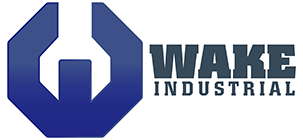S77202-SNF2-PA
Wake Industrial LLC is not an authorized distributor of this product.
- Straightforward Pricing: No Rush Fees, No Credit Card Fees
The S77202-SNF2-PA is a sophisticated digital servo amplifier tailored for seamless integration into SYQNET networks, offering high-level control capabilities within industrial settings. It supports a continuous current of 72 Arms and is adaptable across a voltage range of 208 to 480V. Enhanced with a passive cooling system, this model ensures optimal performance and longevity under demanding operational conditions.
To contact sales for pricing and lead time:
Payment Methods

Shipping Methods



Our Credentials




Product Description:
In Kollmorgen's S700 series, the S77202-SNF2-PA distinguishes itself with its advanced network integration and thermal management capabilities. The amplifier has a compact weight of 13 Kilograms which is essentially versatile for a wide range of different industrial operations. This servo amplifier is capable of managing a continuous current of 72 Arms and accommodating peak currents up to 140 Arms, making it an excellent choice for complex automation systems like high-speed manufacturing, robotic control, and other precision-dependent processes where reliable network communication and control precision are critical.
This model's capability to operate efficiently within a voltage range of 208 to 480V allows for versatile implementation in various global industrial environments. Its integration with the SYQNET interface enhances its capability for networked communication, allowing for seamless data exchange and synchronization with other networked devices. This connectivity is essential for industries aiming to optimize operational efficiency and reliability through enhanced system integration and real-time communication.
A significant feature of the S77202-SNF2-PA is its passive cooling system, which uses natural processes to maintain optimal operating temperatures. This method of cooling is particularly effective in reducing mechanical stress and maintenance needs associated with more active cooling systems, thereby enhancing the amplifier's reliability and durability.
Furthermore, the inclusion of PosI/O analog feedback provides operators with essential operational data, enabling precise control and adjustments necessary for maintaining high-quality production outputs. This feature is invaluable in settings where the accuracy of each operation significantly impacts the overall quality of production.
The S77202-SNF2-PA also includes standard safety features such as Safe Torque Off (STO), which enhances operational safety by rapidly disengaging motor torque in response to system anomalies, thereby preventing unintended movements and potential accidents.
Frequently Asked Questions about S77202-SNF2-PA:
Q: How does SYQNET integration impact the S77202-SNF2-PA’s performance in automated systems?
A: SYQNET integration allows for high-speed, synchronized data transmission between networked devices, enhancing operational coordination and reducing response times in complex automation setups.
Q: What are the benefits of using passive cooling in the S77202-SNF2-PA?
A: Passive cooling minimizes mechanical wear and reduces maintenance needs while effectively managing heat, ensuring the amplifier operates within safe temperature ranges even under high load conditions.
Q: Can the S77202-SNF2-PA handle dynamic changes in operational demands?
A: Yes, designed to efficiently manage fluctuations in power demand, the S77202-SNF2-PA supports peak currents up to 140 Arms, ensuring stable performance under varying operational conditions.
Q: How does PosI/O Analog feedback enhance operational control in the S77202-SNF2-PA?
A: PosI/O Analog feedback provides precise monitoring and control by delivering real-time operational data, enabling swift adjustments that optimize performance and maintain process accuracy.
Q: What safety mechanisms are included in the S77202-SNF2-PA?
A: The inclusion of Safe Torque Off (STO) feature enhances safety by quickly stopping motor output during unexpected conditions, greatly reducing the risk of accidents and enhancing overall operational safety.












